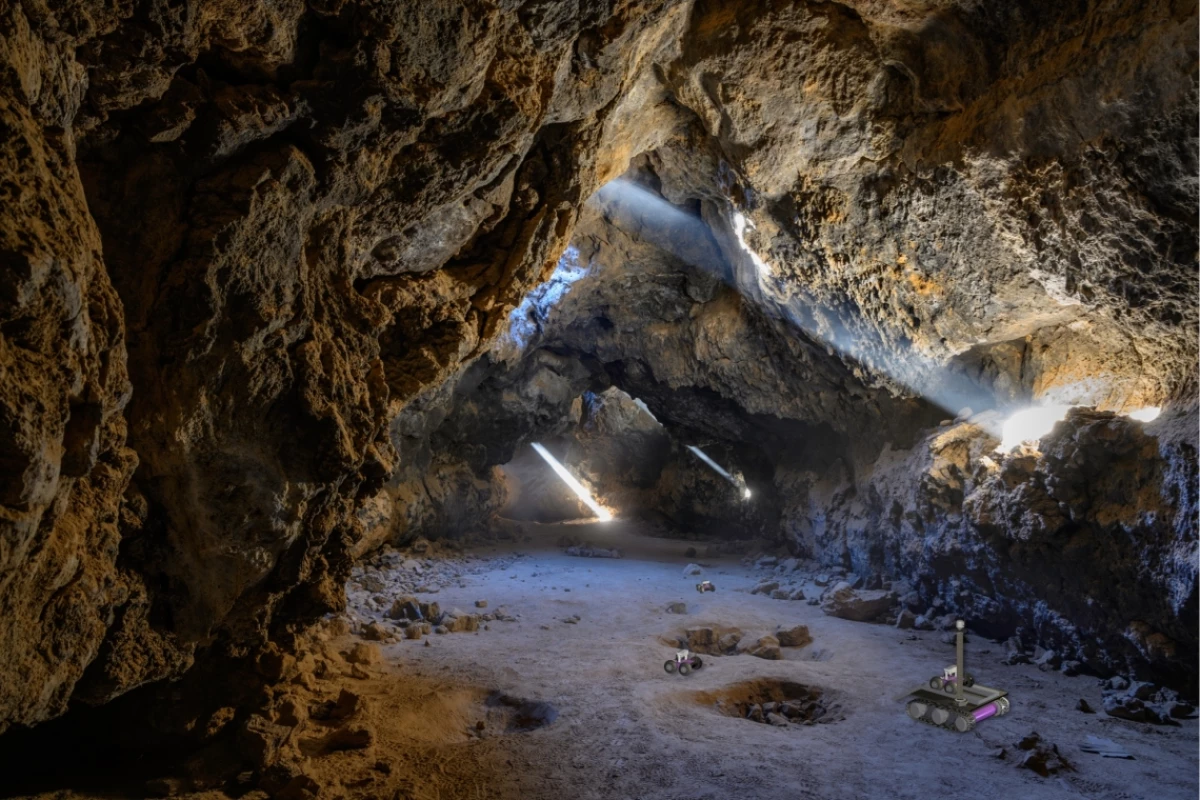Exploring the depths of an unmapped cave system is a daunting enough prospect on its own, but think how risky it would be to do so on another planet such as Mars. That's why a new system is in the works, which would use "breadcrumb"-dropping rovers to do the job.
Currently being developed by a University of Arizona team led by Assoc. Prof. Wolfgang Fink, the system incorporates a ground-going "mother" rover which would carry several smaller rovers to the entrance of a cave system. Those smaller autonomous rovers would then separately head off to explore different passages of the system, while the mother stayed parked at the entrance.
As each rover moved through its respective passage, it would periodically drop small wireless communication nodes known as "breadcrumbs" on the ground. These are named after the fictional breadcrumbs which Hansel and Gretel famously used to find their way back out of the wicked witch's woods.
In order to map the cave system, each small rover would transmit and receive radio signals to and from the mother at regular intervals. Because those signals wouldn't travel well through solid rock, they would instead be relayed from one breadcrumb to the next. The placement of the breadcrumbs would be determined by the rover – as soon as it detected that the signal it was receiving was getting weak, it would drop another breadcrumb.
The signals from the small rovers would contain information such as that rover's location relative to the mother, perhaps along with data gathered by onboard cameras and LiDAR sensors. By processing and combining all of the information from all of the small rovers, the mother would be able to produce a detailed computer map of the system.
It should be noted that the small rovers would be expendable, in that each one would keep moving forward until it ran out of battery power or breadcrumbs, or was stopped by the terrain.

Along with being utilized purely in the name of scientific exploration, the technology could also be used to assess which caves and tunnels might be suitable for conversion into habitats for astronauts. Using existing subterranean structures for this purpose could conceivably be much easier and less costly than constructing buildings from scratch on the planet's surface.
Fink and colleagues have already built functioning rovers along with the associated communication technology, and are now working on a dispersal mechanism for the breadcrumbs.
The research is described in a paper that was recently published in the journal Advances in Space Research.
Source: University of Arizona




